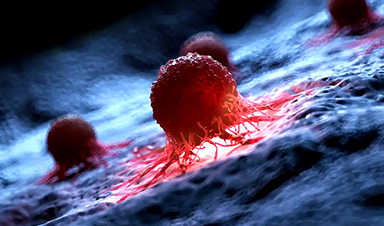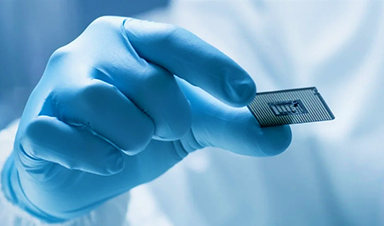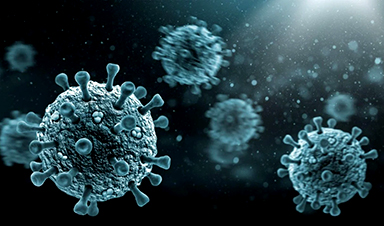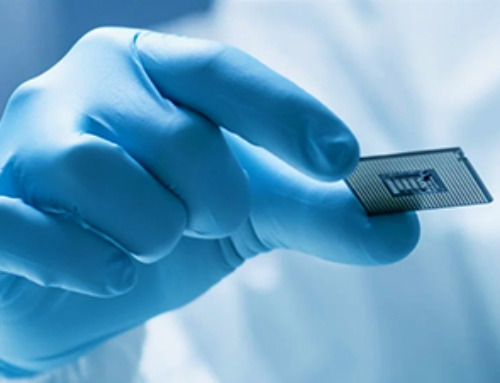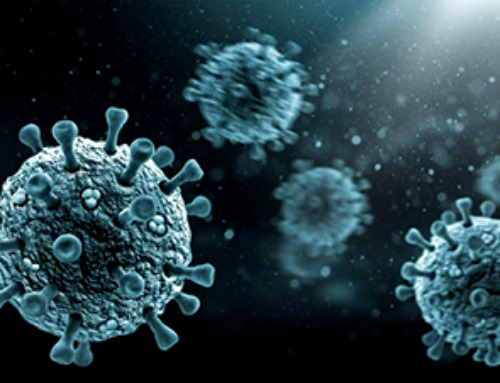A recent study from Yale indicates that additional chromosomes in cancer cells are essential for the growth of tumors. Removing these extra chromosomes inhibits tumor formation. The findings, said the researchers, indicate that selectively targeting extra chromosomes may offer a new route for treating cancer.
The study was recently published in the journal Science.
Human cells typically have 23 pairs of chromosomes; extra chromosomes are an anomaly known as aneuploidy.
However, it was unclear what role extra chromosomes played in cancer — for instance, whether they cause cancer or are caused by it.
“For a long time, we could observe aneuploidy but not manipulate it. We just didn’t have the right tools,” said Sheltzer, who is also a researcher at Yale Cancer Center. “But in this study, we used the gene-engineering technique CRISPR to develop a new approach to eliminate entire chromosomes from cancer cells, which is an important technical advance. Being able to manipulate aneuploid chromosomes in this way will lead to a greater understanding of how they function.”
The study was co-led by former lab members Vishruth Girish, now an M.D.-Ph.D. student at Johns Hopkins School of Medicine, and Asad Lakhani, now a postdoctoral researcher at Cold Spring Harbor Laboratory.
Using their newly developed approach — which they dubbed Restoring Disomy in Aneuploid cells using CRISPR Targeting, or ReDACT — the researchers targeted aneuploidy in melanoma, gastric cancer, and ovarian cell lines. Specifically, they removed an aberrant third copy of the long portion — also known as the “q arm” — of chromosome 1, which is found in several types of cancer, is linked to disease progression, and occurs early in cancer development.
“When we eliminated aneuploidy from the genomes of these cancer cells, it compromised the malignant potential of those cells and they lost their ability to form tumors,” said Sheltzer.
Based on this finding, the researchers proposed cancer cells may have an “aneuploidy addiction” — a name referencing earlier research that discovered that eliminating oncogenes, which can turn a cell into a cancer cell, disrupts cancers’ tumor-forming abilities. This finding led to a model of cancer growth called “oncogene addiction.”
When investigating how an extra copy of chromosome 1q might promote cancer, the researchers found that multiple genes stimulated cancer cell growth when they were overrepresented — because they were encoded on three chromosomes instead of the typical two.
This overexpression of certain genes also pointed the researchers to a vulnerability that might be exploited to target cancers with aneuploidy.
Previous research has shown that a gene encoded on chromosome 1, known as UCK2, is required to activate certain drugs. In the new study, Sheltzer and his colleagues found that cells with an extra copy of chromosome 1 were more sensitive to those drugs than were cells with just two copies, because of the overexpression of UCK2.
Further, they observed that this sensitivity meant that the drugs could redirect cellular evolution away from aneuploidy, allowing for a cell population with normal chromosome numbers and, therefore, less potential to become cancerous. When researchers created a mixture with 20% aneuploid cells and 80% normal cells, aneuploid cells took over: after nine days, they made up 75% of the mixture. But when the researchers exposed the 20% aneuploid mixture to one of the UCK2-dependent drugs, the aneuploid cells comprised just 4% of the mix nine days later.
“This told us that aneuploidy can potentially function as a therapeutic target for cancer,” said Sheltzer. “Almost all cancers are aneuploid, so if you have some way of selectively targeting those aneuploid cells, that could, theoretically, be a good way to target cancer while having minimal effect on normal, non-cancerous tissue.”
More research needs to be done before this approach can be tested in a clinical trial. But Sheltzer aims to move this work into animal models, evaluate additional drugs and other aneuploidies, and team up with pharmaceutical companies to advance toward clinical trials.
“We’re very interested in clinical translation,” said Sheltzer. “So we’re thinking about how to expand our discoveries in a therapeutic direction.”
Reference: “Oncogene-like addiction to aneuploidy in human cancers” by Vishruth Girish, Asad A. Lakhani, Sarah L. Thompson, Christine M. Scaduto, Leanne M. Brown, Ryan A. Hagenson, Erin L. Sausville, Brianna E. Mendelson, Pranav K. Kandikuppa, Devon A. Lukow, Monet Lou Yuan, Eric C. Stevens, Sophia N. Lee, Klaske M. Schukken, Saron M. Akalu, Anand Vasudevan, Charles Zou, Barbora Salovska, Wenxue Li, Joan C. Smith, Alison M. Taylor, Robert A. Martienssen, Yansheng Liu, Ruping Sun and Jason M. Sheltzer, 6 July 2023, Science.
DOI: 10.1126/science.adg4521
News
Global Nanomaterial Regulation: A Country-by-Country Comparison
Nanomaterials are materials with at least one dimension smaller than 100 nanometres (about 100,000 times thinner than a human hair). Because of their tiny size, they have unique properties that can be useful in [...]
Pandemic Potential: Scientists Discover 3 Hotspots of Deadly Emerging Disease in the US
Virginia Tech researchers discovered six new rodent carriers of hantavirus and identified U.S. hotspots, highlighting the virus’s adaptability and the impact of climate and ecology on its spread. Hantavirus recently drew public attention following reports [...]
Studies detail high rates of long COVID among healthcare, dental workers
Researchers have estimated approximately 8% of Americas have ever experienced long COVID, or lasting symptoms, following an acute COVID-19 infection. Now two recent international studies suggest that the percentage is much higher among healthcare workers [...]
Melting Arctic Ice May Unleash Ancient Deadly Diseases, Scientists Warn
Melting Arctic ice increases human and animal interactions, raising the risk of infectious disease spread. Researchers urge early intervention and surveillance. Climate change is opening new pathways for the spread of infectious diseases such [...]
Scientists May Have Found a Secret Weapon To Stop Pancreatic Cancer Before It Starts
Researchers at Cold Spring Harbor Laboratory have found that blocking the FGFR2 and EGFR genes can stop early-stage pancreatic cancer from progressing, offering a promising path toward prevention. Pancreatic cancer is expected to become [...]
Breakthrough Drug Restores Vision: Researchers Successfully Reverse Retinal Damage
Blocking the PROX1 protein allowed KAIST researchers to regenerate damaged retinas and restore vision in mice. Vision is one of the most important human senses, yet more than 300 million people around the world are at [...]
Differentiating cancerous and healthy cells through motion analysis
Researchers from Tokyo Metropolitan University have found that the motion of unlabeled cells can be used to tell whether they are cancerous or healthy. They observed malignant fibrosarcoma [...]
This Tiny Cellular Gate Could Be the Key to Curing Cancer – And Regrowing Hair
After more than five decades of mystery, scientists have finally unveiled the detailed structure and function of a long-theorized molecular machine in our mitochondria — the mitochondrial pyruvate carrier. This microscopic gatekeeper controls how [...]
Unlocking Vision’s Secrets: Researchers Reveal 3D Structure of Key Eye Protein
Researchers have uncovered the 3D structure of RBP3, a key protein in vision, revealing how it transports retinoids and fatty acids and how its dysfunction may lead to retinal diseases. Proteins play a critical [...]
5 Key Facts About Nanoplastics and How They Affect the Human Body
Nanoplastics are typically defined as plastic particles smaller than 1000 nanometers. These particles are increasingly being detected in human tissues: they can bypass biological barriers, accumulate in organs, and may influence health in ways [...]
Measles Is Back: Doctors Warn of Dangerous Surge Across the U.S.
Parents are encouraged to contact their pediatrician if their child has been exposed to measles or is showing symptoms. Pediatric infectious disease experts are emphasizing the critical importance of measles vaccination, as the highly [...]
AI at the Speed of Light: How Silicon Photonics Are Reinventing Hardware
A cutting-edge AI acceleration platform powered by light rather than electricity could revolutionize how AI is trained and deployed. Using photonic integrated circuits made from advanced III-V semiconductors, researchers have developed a system that vastly [...]
A Grain of Brain, 523 Million Synapses, Most Complicated Neuroscience Experiment Ever Attempted
A team of over 150 scientists has achieved what once seemed impossible: a complete wiring and activity map of a tiny section of a mammalian brain. This feat, part of the MICrONS Project, rivals [...]
The Secret “Radar” Bacteria Use To Outsmart Their Enemies
A chemical radar allows bacteria to sense and eliminate predators. Investigating how microorganisms communicate deepens our understanding of the complex ecological interactions that shape our environment is an area of key focus for the [...]
Psychologists explore ethical issues associated with human-AI relationships
It's becoming increasingly commonplace for people to develop intimate, long-term relationships with artificial intelligence (AI) technologies. At their extreme, people have "married" their AI companions in non-legally binding ceremonies, and at least two people [...]
When You Lose Weight, Where Does It Actually Go?
Most health professionals lack a clear understanding of how body fat is lost, often subscribing to misconceptions like fat converting to energy or muscle. The truth is, fat is actually broken down into carbon [...]
